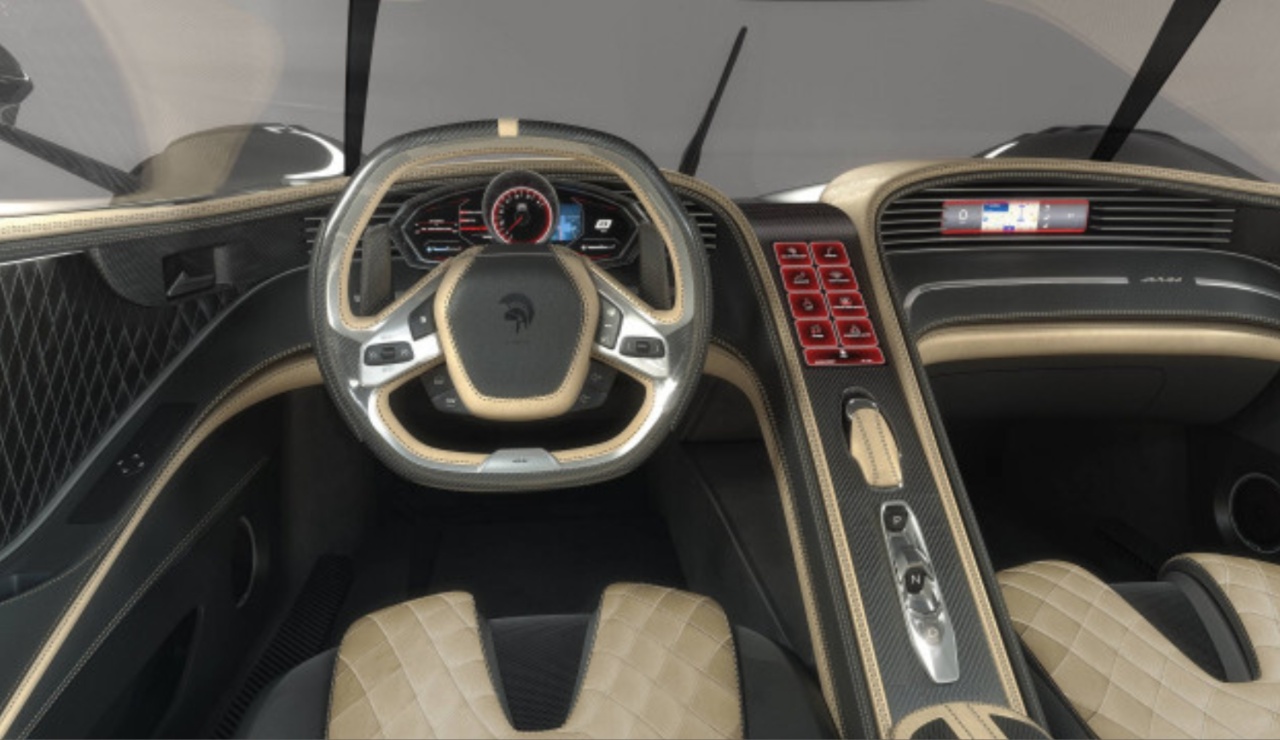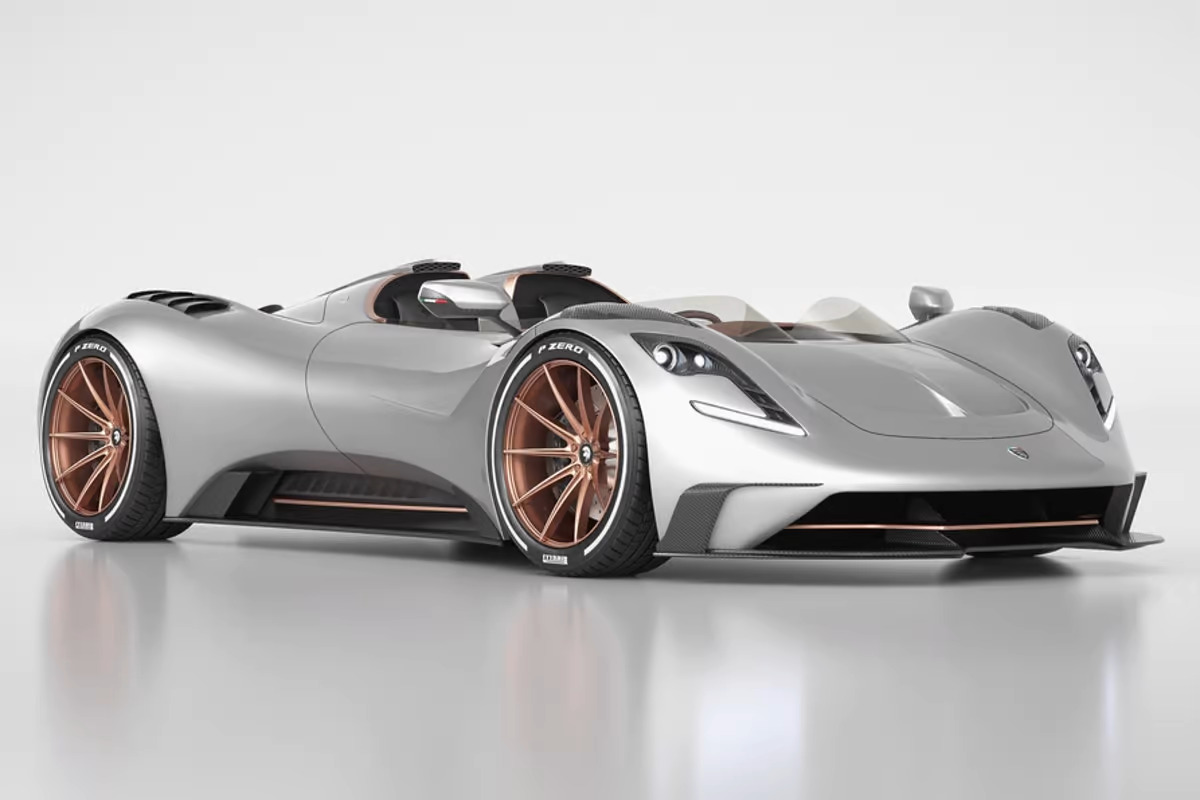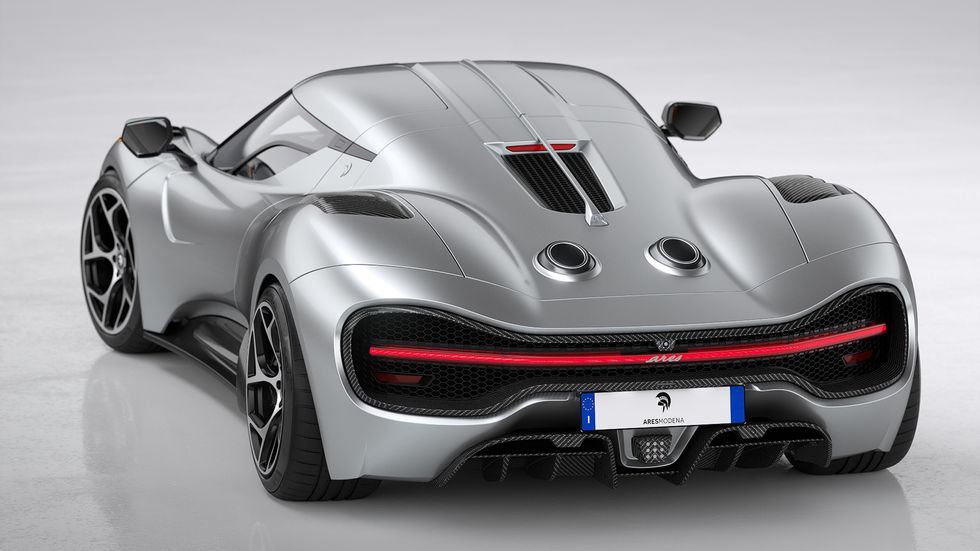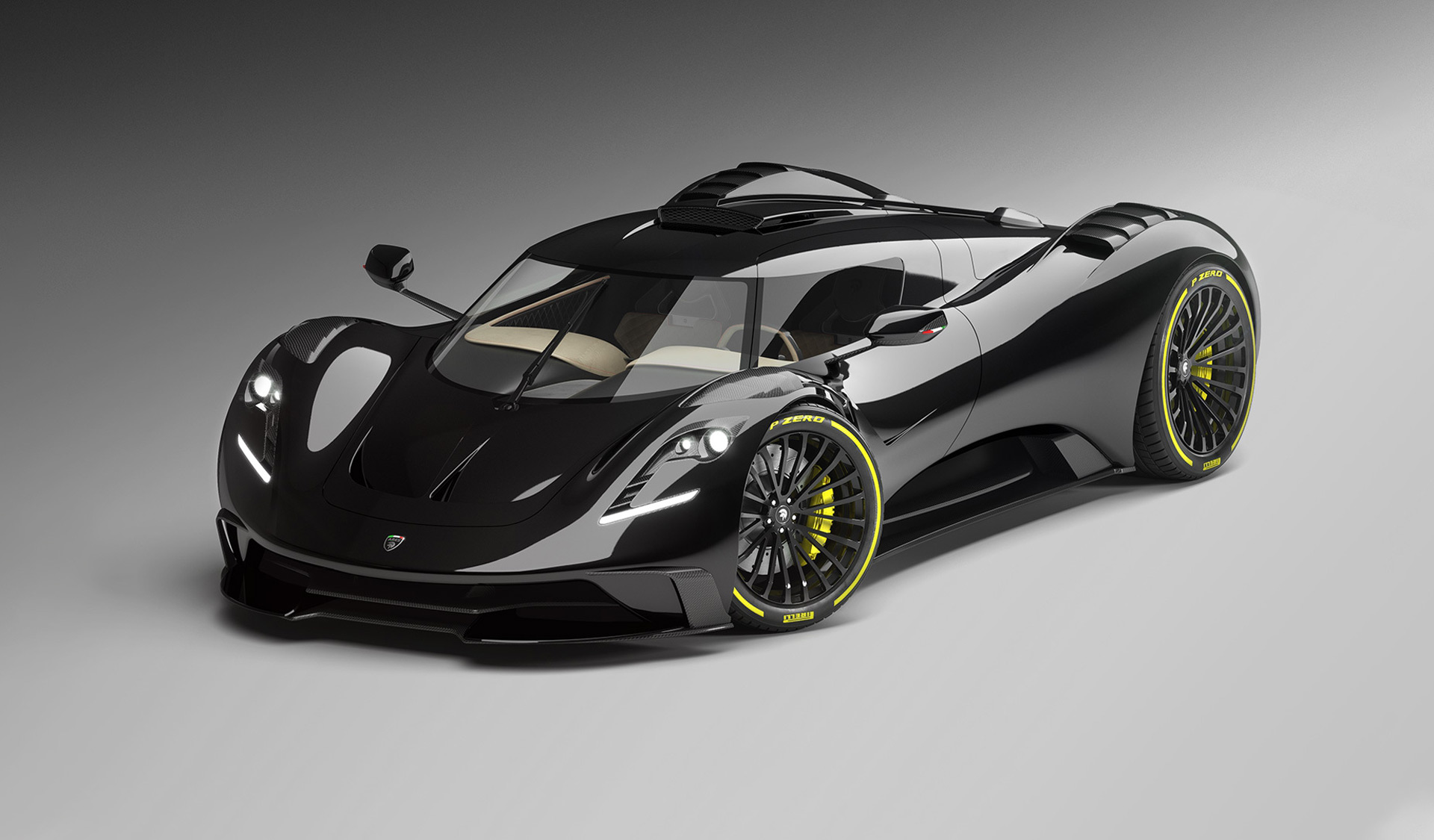Many prestigious car brands boast origin stories steeped in the fervor of artisans striving for automotive perfection. However, the craft of hand-built car manufacturing often harbors a brutal and unforgiving side, particularly when an existing vehicle must undergo a dramatic transformation.
As we walked through the gleaming Ares factory in Modena, Italy, on the day of our visit, we couldn’t help but feel that the brand-new C8 Corvette Stingray parked at one end of the facility was akin to a doomed pig standing beside a slaughterhouse.
Thankfully, we were spared the emotional turmoil of witnessing the transformation process with air chisels at work. Ares is meticulously constructing just two dozen C8 Corvette-based S1 coupes, which means that the cars progress at a deliberate, almost bureaucratic pace within the factory.
Our visit provided a stark contrast – on one side stood a resplendent red Stingray equipped with the Z51 performance package, still cocooned in protective plastic and poised to become someone’s dream car. On the other side, a literal cutaway: the previous Vette in line had been stripped down to its core structure, leaving only the floor, firewall, chassis, engine, and suspension components, with its sawn-off A-pillars almost appearing as stubby fists pleading for justice.

Ares does sell the salvageable components to defray costs, making it a go-to source for C8 parts in Italy. Nevertheless, it still feels like an act of sacrilege. Yet, this concept has deep roots in automotive history. The idea of embodying a Corvette has been around almost as long as the Corvette itself, with some of the most exquisite creations hailing from Italy.
In 1959, Carroll Shelby and fellow Texan racers Jim Hall and Gary Laughlin arranged for three bare C1 chassis to be shipped to Carrozzeria Scaglietti in Italy, and in return, they received three Ferrari-like coupes. In 1963, General Motors even commissioned Pininfarina to restyle a C2 Corvette with European sensibilities, a task undertaken by a young Tom Tjaarda, although the car remained a one-off.
Ares may not be a household name, but its founder’s reputation precedes him. Dany Bahar, the Turkish-Swiss former head of Lotus, has a legacy at the British sports car manufacturer forever marked by controversy.
Bahar is famously associated with Lotus’s introduction of five new models at the 2010 Paris Auto Show, none of which ever made it to production, and his tumultuous tenure ended in 2012, followed by legal battles between him and Lotus.

Speaking in his expansive office, Bahar, now nearing his 52nd birthday, reflects on those times, saying, “I learned a lot from that time. I learned that words are not worth anything in the corporate world, that everything needs to be in writing.”
Established in 2014 in Modena, Ares initially started as an upmarket vehicle modification company catering to the wealthy and their extravagant desires, a realm populated by companies like Mansory. But Ares quickly expanded beyond superficial changes, delving into more substantial modifications and creating limited production runs while retaining the core mechanical components of the original vehicles.
Some notable projects include a Targa version of the Porsche 911 GT3, a two-door Bentley Mulsanne coupe, rugged versions of the classic Land Rover Defender and Mercedes G-Class, and even cabriolet and station wagon conversions of the Tesla Model S. Bahar admits that he finds it challenging to turn down customer requests.
One of their early standout projects was the Panther ProgettoUno, a Lamborghini Huracán transformed into a modern take on the De Tomaso Pantera, complete with an H-pattern gear shifter for the dual-clutch gearbox. The Ares S1, however, is a far more ambitious endeavor, with plans for coupes and roadsters requiring substantial modifications to turn the American sports car into a pseudo-hypercar.
The assembly bays in Modena showcase the transformation process: After stripping the C8 of its bodywork, a new metal substructure is added, and carbon-fiber panels are affixed. The regular C8’s doors are replaced with butterfly-hinged units, a requirement for a hypercar, and the cabin undergoes a complete redesign and retrim.

One of the most striking design elements of the S1 is the exhaust that exits through the engine’s top cover, a modification that necessitated significant re-plumbing in the engine compartment.
Despite knowing that a Corvette is the foundation, the S1 still manages to exude a sense of sheer automotive opulence. It looks like a million dollars up close, and fortunately, it carries a price tag slightly higher than that. The Ares employees we spoke to were coy about the exact pricing, as the S1 is highly customizable, with buyers often specifying unique Pantone colors and rare animal skins. However, the starting point is a million Euros, just over $1 million.
On a positive note, the S1, based on an existing car, bypasses many of the type-approval hurdles that often hinder limited-run performance cars. Several S1s have already found their way into the hands of buyers in the United States.
Even with a Corvette beneath the surface, the S1 retains its identity as a design masterpiece. While the regular C8 can sometimes feel like an amalgamation of lines and angles, none of which effectively conceal the car’s substantial frame, Ares has managed to cloak the same underlying structure in sleek, muscular curves that draw inspiration from numerous supercars while still maintaining a fresh and unique aesthetic.

However, the shift to the swoopy new exterior design brings notable compromises, especially when trying to access the S1’s cabin. For anyone over six feet tall, the experience may be rather uncomfortable, as space is limited.
Even at six feet, your reporter had to position the driver’s seat in its lowest and most reclined setting just to fit into the cabin, with the roof still touching the head once the door was closed. While the seats have been reupholstered and adorned with Ares logos, the original Corvette frames remain underneath. The company acknowledges the need for a lowering kit to address this issue.
Driving the S1 feels akin to piloting a luxurious pillbox. The rearview camera system replaces any glass at the back with the image displayed on the central screen. The S1’s cabin dispenses with the bulky array of switchgear that typically divides the driver and passenger in the C8, featuring a redesigned digital instrument cluster. Amidst the finely stitched leather, there are still recognizable Corvette components, including the transmission controls and steering wheel, adorned with the Ares Trojan helmet logo.
The cabin also delivers an element of theater, with a digital display in front of the passenger reminiscent of more exclusive supercars like the Ferrari 296GTB and Lamborghini Revuelto. Some discrepancies can be observed in the digital bars, such as “4WS,” although the C8 lacks four-wheel steering, and therefore so does the Ares.
In terms of mechanical changes, they are relatively minor. Originally, Ares claimed the S1 would produce 715 horsepower, but this figure has been revised downward to 530 horsepower, just 35 more than the regular Stingray. This power bump is attributed to a new ECU and a more unrestricted exhaust. The more significant change is the claimed 550-pound weight reduction thanks to the carbon-fiber bodywork. Despite this, the suspension

